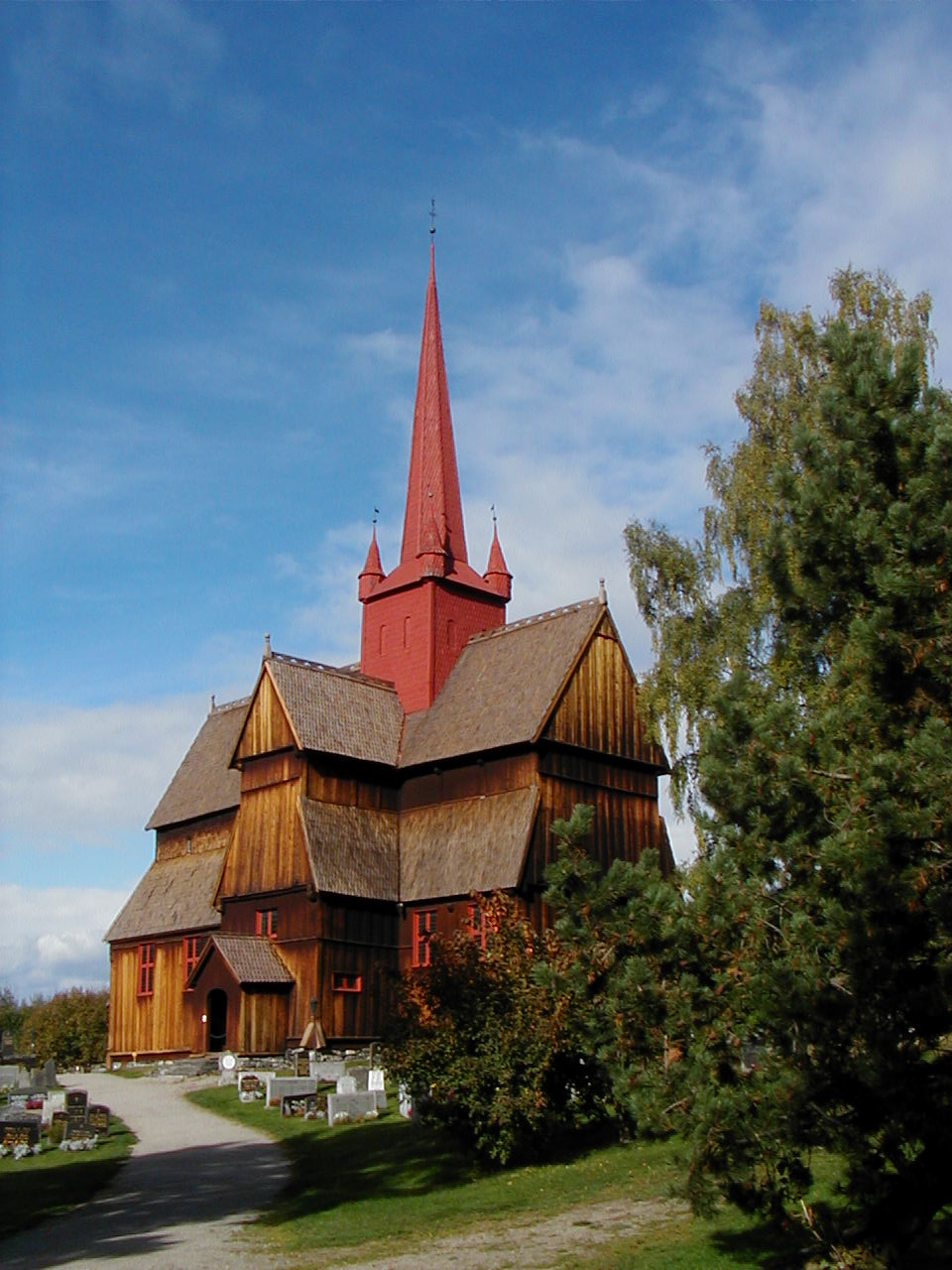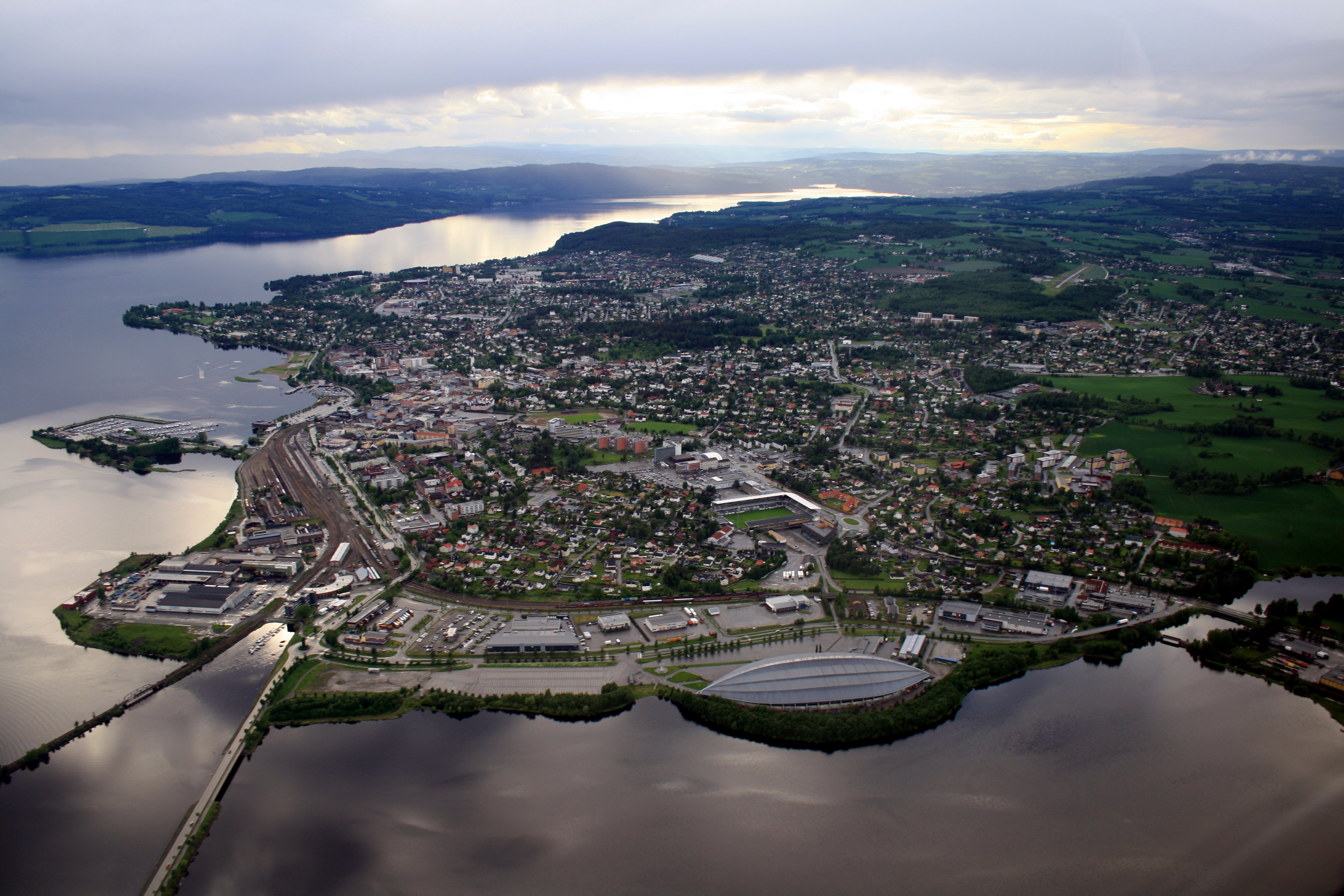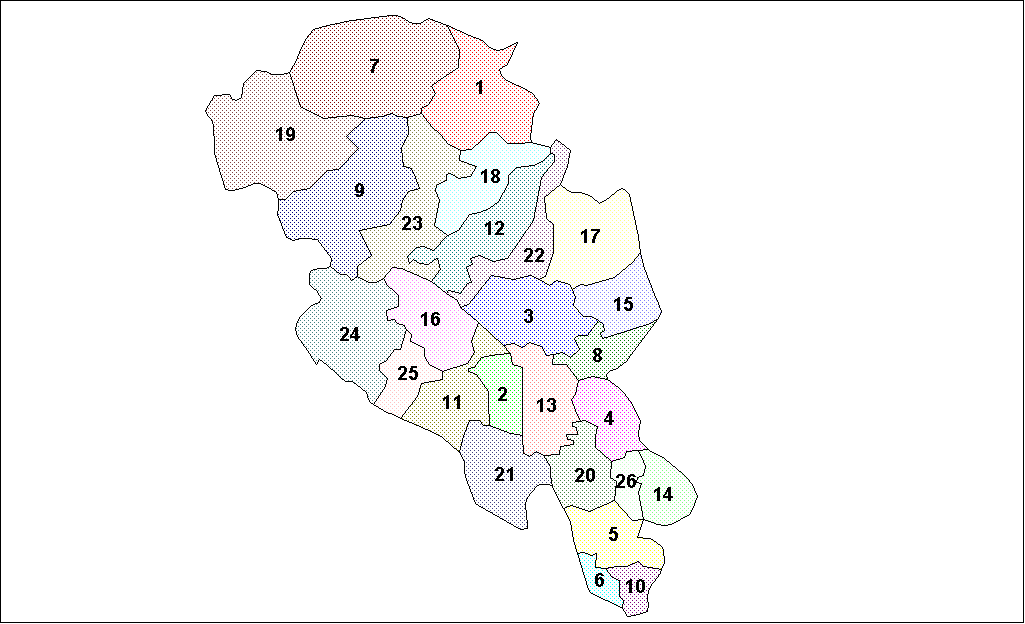|
Ringebu
is a municipality in Innlandet county, Norway. It is located in the traditional district of Gudbrandsdal. The administrative centre of the municipality is the village of Vålebru (the village is also known as ''Ringebu''). The municipality is the 85th largest by area out of the 356 municipalities in Norway. Ringebu is the 195th most populous municipality in Norway with a population of 4,416. The municipality's population density is and its population has decreased by 1.8% over the previous 10-year period. General information The prestegjeld of Ringebu was established as a municipality on 1 January 1838 (see formannskapsdistrikt law). In 1864, the northern part of Ringebu (population: 386) was separated to become the new municipality of Sollia. (In 1890, Sollia switched from Oppland county to Hedmark county.) On 1 January 1899, an unpopulated part of Ringebu (in Oppland county) was transferred to the neighboring municipality of Sollia (in Hedmark county). Name The munic ... [...More Info...] [...Related Items...] OR: [Wikipedia] [Google] [Baidu] |
Ringebu Stave Church
Ringebu Stave Church () is a parish church of the Church of Norway in Ringebu Municipality in Innlandet county, Norway. It is located in the village of Ringebu in the Gudbrandsdalen valley. It is the church for the Ringebu parish which is part of the Sør-Gudbrandsdal prosti (deanery) in the Diocese of Hamar. The brown, wooden church was built in a stave church design around the year 1220 using plans drawn up by an unknown architect. The church seats about 300 people. History The earliest existing historical records of the church date back to the year 1270, but the church was not new that year. The first church in Ringebu was a wooden post church that was built in the 11th century. This church was in use for about 200 years before it was torn down in the early 13th century. A new wooden stave church was then built on the same site. Dendrochronological dating of the logs used to build this church show that the logs were cut in the 1190s, so the church must have been constructed in ... [...More Info...] [...Related Items...] OR: [Wikipedia] [Google] [Baidu] |
Ringebu (village)
Ringebu or Vålebru is the administrative centre of Ringebu Municipality in Innlandet county, Norway. The village is located in the Gudbrandsdal valley, along the Gudbrandsdalslågen river. The European route E6 highway and the Dovrebanen railway line both pass through the village. The village has a population (2021) of 1353 and a population density of . The Ringebu Stave Church Ringebu Stave Church () is a parish church of the Church of Norway in Ringebu Municipality in Innlandet county, Norway. It is located in the village of Ringebu in the Gudbrandsdalen valley. It is the church for the Ringebu parish which is part of ... is located about to the southeast of the village. Name The village is named ''Ringebu'' which is the same as the name of the municipality in which it is located. The name ''Vålebru'' is another name for the village which is most often used when one wants to avoid ambiguity between the village of Ringebu and the municipality of Ringebu. The name Vålebru ... [...More Info...] [...Related Items...] OR: [Wikipedia] [Google] [Baidu] |
Sør-Gudbrandsdal Prosti
The list of churches in Hamar is a list of the Church of Norway churches in the Diocese of Hamar in Norway. It includes all of the parishes in Innlandet county plus the parishes in Lunner Municipality in Akershus county. The diocese is based at the Hamar Cathedral in the city of Hamar in Hamar Municipality. The list is divided into several sections, one for each deanery (; headed by a Provost (religion), provost) in the diocese. Administratively within each deanery, the churches within each municipality elects their own church council (). Each municipality may have one or more parishes () within the municipality. Each parish elects their own councils (). Each parish has one or more Parish church, local church. The number and size of the deaneries and parishes has changed over time. The Diocese of Hamar was first established in 1153 when Norway was part of the Catholic Church. During the Reformation in Norway, in 1537, the diocese was incorporated into the Diocese of Oslo, Diocese ... [...More Info...] [...Related Items...] OR: [Wikipedia] [Google] [Baidu] |
Sollia (municipality)
Sollia is a former municipality in the old Hedmark county, Norway. The municipality existed from 1864 until its dissolution in 1965. The area is now part of Stor-Elvdal Municipality in the traditional district of Østerdalen. The administrative centre was the village of Sollia where Sollia Church is located. Prior to its dissolution in 1965, the municipality was the 202nd largest by area out of the 525 municipalities in Norway. Sollia Municipality was the 521st most populous municipality in Norway with a population of about 377. The municipality's population density was and its population had decreased by 14.5% over the previous 10-year period. General information The parish of ''Solliden'' (population: 386), later spelled ''Sollia'', was established as a municipality on 1 January 1864 when it was separated from Ringebu Municipality. The new municipality was originally part of Kristians amt (county) when it was established. On 1 January 1891, Solliden Municipality was tra ... [...More Info...] [...Related Items...] OR: [Wikipedia] [Google] [Baidu] |
Fåvang
Fåvang is a village in Ringebu Municipality in Innlandet county, Norway. The village is located in the Gudbrandsdal valley, along the Gudbrandsdalslågen river, about north of the town of Lillehammer (town), Lillehammer. The European route E6 highway runs through the village, right along the river. The village has a population (2021) of 720 and a population density of . History Fåvang Stave Church (''Fåvang kirke'') was built after the Reformation, for the most part of using materials from earlier stave churches in the valley which had been demolished. The church was probably built between 1627 and 1630. The oldest parts can be dated back to around 1150–1250. Particularly heavy fighting took place in Fåvang, as well as neighboring Tretten, Vinstra, Kvam, Innlandet, Kvam, Sjoa (village), Sjoa and Otta, Norway, Otta during the Norwegian Campaign which led up to the occupation of Norway by Nazi Germany. The Norwegian movie ''Jonny Vang'' was principally filmed in the town ... [...More Info...] [...Related Items...] OR: [Wikipedia] [Google] [Baidu] |
Innlandet
Innlandet is a Counties of Norway, county in Norway. It was created on 1 January 2020 with the merger of the old counties of Oppland and Hedmark (Jevnaker Municipality and Lunner Municipality were transferred to the neighboring county of Viken (Norwegian county), Viken on the same date). The new county has an area of , making it the largest county in Norway after the division of the old Troms og Finnmark county in 2024. The region was known as Opplandene or Opplanda since the middle ages. Historically part of Akershus, Oplandene County existed from 1757 to 1781, when it was divided into Christians County and Hedemarken County, also known as Western and Eastern Oplandene. In 1919 the two counties were renamed Oppland and Hedmark, and in 2020 they were again merged under the name Innlandet (with the exception of Jevnaker Municipality and Lunner Municipality, which went to the new county of Viken (county), Viken). This present name is a newly constructed name with no historical basi ... [...More Info...] [...Related Items...] OR: [Wikipedia] [Google] [Baidu] |
List Of Municipalities Of Norway
Municipalities in Norway are the basic unit of local government. Norway is divided into 15 administrative regions, called Counties of Norway, counties. These counties are subdivided into 357 municipality, municipalities (as of 2024). The capital city Oslo is both a county and a municipality. Municipalities are responsible for primary education (through 10th grade), outpatient Health care, health services, old age, senior citizen services, welfare spending, welfare and other Social work, social services, zoning, economic development, and municipal roads and utilities. The municipality is governed by a Municipal council (Norway), municipal council of Direct election, directly elected representatives. The mayor is Indirect election, indirectly elected by a vote of the municipal council. Law enforcement and Church of Norway, church services are provided at a national level in Norway. Municipalities are undergoing continuous change by dividing, consolidating, and adjusting boundaries. ... [...More Info...] [...Related Items...] OR: [Wikipedia] [Google] [Baidu] |
Oppland
Oppland is a former county in Norway which existed from 1781 until its dissolution on 1 January 2020. The old Oppland county bordered the counties of Trøndelag, Møre og Romsdal, Sogn og Fjordane, Buskerud, Akershus, Oslo and Hedmark. The county administration was located in the town of Lillehammer. Merger On 1 January 2020, the neighboring counties of Oppland and Hedmark were merged to form the new Innlandet county. Both Oppland and Hedmark were the only landlocked counties of Norway, and the new Innlandet county is the only landlocked county in Norway. The two counties had historically been one county that was divided in 1781. Historically, the region was commonly known as " Opplandene". In 1781, the government split the area into two: Hedemarkens amt and Kristians amt (later renamed Hedmark and Oppland). In 2017, the government approved the merger of the two counties. There were several names debated, but the government settled on ''Innlandet''. Geography Oppland ext ... [...More Info...] [...Related Items...] OR: [Wikipedia] [Google] [Baidu] |
Diocese Of Hamar
The Diocese of Hamar () is a diocese within the Church of Norway. The Diocese of Hamar includes all of the churches in Innlandet county plus the churches in Lunner Municipality in Akershus county. Administratively, the diocese is divided into 10 deaneries and 164 parishes in the diocese. The seat of the Diocese of Hamar is located at the Hamar Cathedral () in the city of Hamar. History The Ancient Diocese of Hamar, Roman Catholic Diocese of Hamar was formed in the year 1152 when it was separated from the Ancient Diocese of Oslo, Roman Catholic Diocese of Christiania. At the time of the Protestant Reformation in Norway in 1536, the archbishop and the bishops were removed and the Diocese of Hamar once again came under the Diocese of Oslo, Diocese of Christiania within the new Lutheran Church of Norway. Mogens Lauritsson was the last Roman Catholic bishop of the Ancient Diocese of Hamar. In 1864, the Lutheran Diocese of Hamar was established when it was separated from the Diocese ... [...More Info...] [...Related Items...] OR: [Wikipedia] [Google] [Baidu] |
Gudbrandsdal
Gudbrandsdalen (; ) is a valley and traditional district in the Norwegian county of Innlandet (formerly Oppland). The valley is oriented in a north-westerly direction from Lillehammer and the lake of Mjøsa, extending toward the Romsdalen valley. The river Gudbrandsdalslågen (Lågen) flows through the valley, starting from the lake Lesjaskogsvatnet and ending at the lake Mjøsa. The Otta river which flows through Otta valley is a major tributary to the main river Lågen. The valleys of the tributary rivers such as Otta and Gausa (Gausdal) are usually regarded as part of Gudbrandsdalen. The total area of the valley is calculated from the areas of the related municipalities. Gudbrandsdalen is the main valley in a web of smaller valleys. On the western (right hand) side there are long adjacent valleys: Ottadalen stretches from Otta village, Gausdal some from Lillehammer and Heidal some from Sjoa. Gudbrandsdalen runs between the major mountain ranges of Norway including Jot ... [...More Info...] [...Related Items...] OR: [Wikipedia] [Google] [Baidu] |
Formannskapsdistrikt
() was the name of a Norwegian self-governing municipality. The name was used from the establishment these municipalities in 1838 until the name fell out of use in 1863. The municipalities had their legal basis from two laws enacted on 14 January 1837. The laws established two types of ; one for cities () and one for rural districts (). These districts were mostly based on the former parishes. City municipalities had a monopoly on trade in both the municiality and for surrounding districts. Each district was to elect two councils that governed the municipality. The upper council was called and the lower council was called . The chariman of this council also represented the municipality at the county level. The destinction between cities and rural districts existed until it was gradually replaced by 1995. is still used as name of the most important council in Norwegian municipalities. In total, 396 municipalities were created under these laws. History The establishmen ... [...More Info...] [...Related Items...] OR: [Wikipedia] [Google] [Baidu] |



